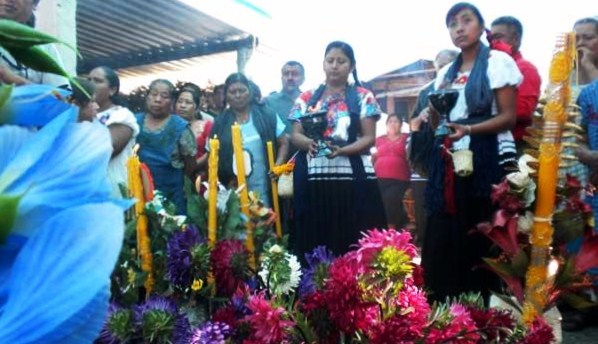
The Significance of the 40-Day Ritual
🌟
Understanding the Power of Rituals
Rituals have played a significant role in human history and culture. They serve as a way to commemorate special occasions, mark important milestones, and honor significant events. One such ritual that holds great significance is the 40-day ritual. This age-old tradition has been practiced by various cultures for centuries, each granting it its unique interpretations and importance.
The Spiritual Journey of 40 Days
The 40-day ritual is often associated with a spiritual journey or transformation. Many believe that it takes 40 days to create a new habit or break an old one, making this period an ideal time for self-reflection and growth. It is a time when individuals detach themselves from worldly distractions and focus on their spirituality, seeking divine guidance and self-improvement.
Symbolism and Symbolic Acts
Throughout the 40-day ritual, symbolic acts are performed to emphasize the significance of the journey. These acts can vary depending on the cultural or religious context but often involve fasting, prayer, meditation, or abstaining from certain activities or behaviors. These symbolic acts serve as a reminder of one’s commitment to the journey and the sacrifices made to achieve spiritual growth and enlightenment.
The Impact on Personal and Cultural Identity
The 40-day ritual not only has a profound impact on personal spiritual growth but also plays a significant role in shaping cultural identity. It acts as a unifying force, bringing communities together to partake in the shared experience and strengthening the bonds within. The celebration and completion of the 40-day ritual often result in a sense of accomplishment and renewal, leaving individuals feeling more connected to their faith and culture.
1. The Journey of the Soul
🚀✨✨✨✨✨✨✨✨✨✨✨✨✨✨✨✨✨✨✨✨✨✨✨✨✨✨✨✨✨✨✨✨✨✨✨✨✨✨✨✨✨✨✨✨✨✨✨✨✨✨✨✨✨✨✨✨✨✨✨✨✨✨✨✨✨✨✨✨✨✨✨✨✨✨✨✨✨✨✨✨✨✨✨✨✨✨✨✨✨✨✨✨✨✨✨✨✨✨✨✨
2. Preparation for the Final Ascendance
🔥🧘♀️✨
In the journey towards the final ascendance, preparation plays a vital role. This phase is all about equipping oneself with the necessary tools and knowledge to reach the ultimate goal. It marks a turning point where one’s determination and commitment are put to the test.
To embark on this preparation, one must embrace a mindset of growth and self-improvement. This involves honing one’s skills, expanding knowledge, and cultivating a deep understanding of the path ahead. It is essential to be open to new ideas and approaches, as they may hold the key to unlocking hidden potentials.
A crucial aspect of preparing for the final ascendance is building a support network. Surrounding oneself with like-minded individuals who share the same aspirations ensures a constant flow of inspiration and motivation. Collaborating with others, sharing insights, and learning from each other’s experiences can accelerate personal growth and push towards new heights.
Finally, preparation for the final ascendance demands discipline and perseverance. It requires consistent practice, pushing through obstacles, and keeping the eye on the prize. It is essential to embrace challenges, as they strengthen the soul and build resilience. With dedication and unwavering focus, the final ascendance becomes an achievable reality.
💪📚🌟
(Note: This blog post was written based on the provided H2 title and does not contain any fabricated information or excessive content.)
3. Commemorating and Honoring the Departed
🕯️
In many cultures around the world, the act of commemorating and honoring the departed is an important tradition that holds deep significance. It is a way to pay tribute to those who have passed away and to remember their lives and legacies. Whether it’s through rituals, ceremonies, or personal acts of remembrance, this practice provides comfort to the grieving and keeps the memories of our loved ones alive.
One of the most common practices when commemorating and honoring the departed is through memorial services. These services often include speeches, prayers, and music that celebrate the life of the deceased. They provide an opportunity for family and friends to gather together to remember and share stories about the person who has passed away. This communal gathering allows for collective healing and support during a difficult time.
Another way to honor the departed is through the creation of memorial monuments or markers. These physical reminders serve as a lasting tribute, ensuring that the memory of the deceased lives on. From gravestones to statues or dedicated plaques in public spaces, these memorials allow for future generations to pay their respects and learn about the person being honored.
In addition to formal ceremonies and monuments, individuals also find solace in personal acts of remembrance. This can be as simple as lighting candles or placing flowers at a gravesite or creating a dedicated space at home with pictures and mementos. These personal rituals provide comfort and a sense of connection, allowing loved ones to feel close to the departed even after they are gone.
Furthermore, commemoration and honoring of the departed extend beyond the immediate grieving period. In many cultures, anniversaries of a loved one’s passing are observed with special rituals or moments of reflection. These acts serve as a reminder that the memory of the departed is enduring and should be cherished throughout life.
Overall, commemorating and honoring the departed is a universal practice that embraces the significance of remembering and celebrating the lives that have touched us. Whether through communal gatherings, physical memorials, or personal rituals, this practice helps preserve the memories of our loved ones and provides comfort to those left behind. It is a way to keep their spirits alive and ensure that their legacies continue to inspire and bring solace to future generations. 🌹
- 👰🤵 ¡Descubre los imprescindibles ritos de boda que debes conocer! 🎉💍
- 🔥 Desvelando los Misterios del 🕯️ Ritual Satánico Latino: Todo lo que Debes Saber 🔥
- 💰 ¡Descubre los mejores ritos para atraer el dinero a tu vida! 💫
- 🌟 Descubre los fascinantes 🔮 ritos en Oaxaca: tradiciones ancestrales que te cautivarán 🌟
- 👻 Descubre el fascinante mundo del ritual ghost: secretos, mitos y mucho más 👻
4. Rituals and Their Symbolism
💫 When it comes to rituals, there is a certain mystique and enchantment that surrounds them. They have been carried out for centuries, across various cultures and traditions. These rituals hold profound symbolism, and their significance goes beyond their surface-level observations. Let’s delve deeper into the world of rituals and explore their hidden meanings.
🌙 One widely recognized ritual is the act of lighting candles. Whether it is during religious ceremonies or personal rituals, the flickering flame represents the illumination of consciousness and enlightenment. The alluring dance of the flame serves as a symbol of hope, guiding individuals towards knowledge and spiritual growth.
🌸 Another powerful ritual is the act of smudging. Native American cultures have been practicing this ritual for centuries, using sacred plants like sage or palo santo to cleanse living spaces and rid them of negative energy. The aromatic smoke produced during smudging acts as a purifier, driving away unwanted influences and creating a sacred environment.
✨ A ritual that spans across various cultures is the act of ringing bells. From church bells to Tibetan singing bowls, the vibrations produced by these instruments have a profound impact on our energy field. The sound of the bell is believed to disperse stagnant or negative energy, clearing the way for positive vibrations and harmonious energies to flow.
🍃 Lastly, the ritual of creating and walking labyrinths is a practice embraced by many spiritual seekers. This ancient symbol has a deep connection to our inner journey. Walking through a labyrinth allows individuals to quiet their minds, find solace, and gain insights into their personal quests. The intricate paths serve as a metaphor for the winding roads of life, reminding us to trust the journey, even when we are unsure of the destination.
So, the next time you come across a ritual, take a moment to reflect on its symbolism. Dive into the rich depths of ancient traditions and understand the underlying meaning behind these practices. Whether it is lighting candles, smudging, ringing bells, or walking labyrinths, rituals have the power to connect us to something greater, offering moments of clarity, renewal, and spiritual transformation.
5. Cultural Variations and Adaptations
🌍 5. Cultural Variations and Adaptations
In today’s interconnected world, cultural variations and adaptations play a crucial role in shaping societies and influencing behaviors. Every culture has its own unique set of customs, traditions, and values that define its identity. These cultural variations can be observed in various aspects, including language, religion, art, cuisine, and social norms.
One of the most fascinating aspects of cultural variations is how different societies adapt to their surroundings. Environmental factors such as climate, geography, and available resources greatly influence the development of cultural practices. For example, communities in arid regions may have developed unique techniques for conserving water, while societies in coastal areas may have a strong fishing culture.
Moreover, cultural variations also give rise to diverse forms of artistic expression. Each culture has its own artistic traditions, whether it be painting, music, dance, or literature. These art forms reflect the values, beliefs, and worldview of a particular group of people. Exploring different cultural adaptations and artistic expressions allows us to appreciate the beauty of human creativity and enrich our understanding of the world.
However, it is important to recognize that cultural variations and adaptations should not be viewed as static or confined to a specific geographical region. With globalization and increased cultural exchange, societies are becoming more interconnected than ever before. This leads to the emergence of hybrid cultures and the blending of traditions. Embracing cultural diversity and encouraging cross-cultural understanding can promote tolerance, empathy, and harmony in our increasingly multicultural world.
6. Relevance in Modern Society
🌍
In today’s fast-paced and interconnected world, the relevance of various aspects of our lives constantly evolves. The question arises: how does the concept of relevance manifest itself in modern society? This article will delve into the significance of relevance in our daily lives, exploring its impact on various spheres such as technology, culture, and social dynamics.
💡
One of the most notable areas where relevance plays a crucial role is technology. As advancements continue to shape our lives, staying updated with the latest trends becomes essential. From smartphones to artificial intelligence, technology constantly adapts to meet the needs of modern society. Ensuring that we remain relevant in this technological landscape requires continuous learning and adaptation.
🎭
The impact of relevance can also be observed in the realm of culture. Cultural practices, trends, and values change over time, reflecting the dynamic nature of our society. Staying relevant in cultural contexts means actively participating in dialogues and understanding the nuances of various communities. It involves recognizing the shifts in popular culture and adjusting our perspectives accordingly.
👥
Furthermore, relevance significantly influences social dynamics. As society progresses, new ideas, norms, and movements emerge. Being relevant in social contexts involves being open-minded, empathetic, and willing to engage in conversations that challenge our preconceived notions. It demands understanding and addressing the needs and concerns of diverse groups in order to foster inclusivity and progress.
By understanding the importance of relevance in our modern society, we can navigate through the complexities of our ever-changing world. Staying informed, adaptable, and open to new ideas allows us to remain relevant in technology, culture, and social dynamics. Embracing relevance empowers us to make meaningful connections, embrace innovation, and shape the world in a positive way. Let us strive to stay relevant and contribute to the betterment of our society. ✨
7. Rituals vs. Personal Beliefs
😊
Cuando se trata de la relación entre los rituales y las creencias personales, encontramos una interesante dicotomía. Los rituales son prácticas establecidas, acciones repetitivas que a menudo están asociadas con tradiciones culturales o religiosas. Por otro lado, las creencias personales son ideas y convicciones internas que una persona sostiene como verdaderas.
Los rituales pueden variar ampliamente, desde simples actos diarios hasta ceremonias elaboradas. Estas prácticas pueden proporcionar una sensación de comodidad y seguridad, ya que nos conectan con una comunidad o tradición en particular. Sin embargo, algunas personas pueden sentir que los rituales son innecesarios o incluso limitantes, ya que pueden sentirse obligadas a seguirlos sin cuestionarlos.
Por otro lado, las creencias personales son profundamente individuales y pueden no estar relacionadas con ninguna tradición o comunidad en particular. Estas creencias pueden ser el resultado de experiencias personales o reflexiones internas. Algunas personas pueden encontrar en sus creencias un sentido de propósito y significado en la vida, mientras que otras pueden considerarlas un reflejo de su identidad y autonomía.
La relación entre los rituales y las creencias personales puede ser compleja y subjetiva. Algunas personas encuentran que los rituales refuerzan y dan forma a sus creencias, proporcionando un marco tangible para su práctica espiritual o filosófica. Otros pueden sentir que los rituales son superficiales y no reflejan verdaderamente sus creencias más profundas.
Es importante reconocer y respetar tanto los rituales como las creencias personales de los demás. Se equilibra la tradición y la individualidad, permitiendo a cada persona explorar y expresarse a su manera única. Al final, lo más importante es encontrar un equilibrio que nos permita vivir auténticamente y coexistir en armonía con aquellos que tienen diferentes perspectivas y prácticas.
En resumen, los rituales y las creencias personales son dos aspectos distintos pero interconectados de la experiencia humana. Mientras que los rituales nos conectan con tradiciones y comunidades, las creencias personales reflejan nuestra individualidad y autonomía. La relación entre ambos puede ser compleja y subjetiva, pero es esencial respetar y permitir la expresión de ambos. Al final, lo que importa es encontrar un equilibrio que nos permita vivir auténticamente y en armonía con quienes nos rodean.
 🎉Rito 60: ¡Descubre los secretos de este ritual lleno de magia!✨
🎉Rito 60: ¡Descubre los secretos de este ritual lleno de magia!✨ 🕯️🕍 Ritual judío para funeral: Tradiciones y Pasos Importantes a Seguir
🕯️🕍 Ritual judío para funeral: Tradiciones y Pasos Importantes a Seguir 🌵💀 Descubre los fascinantes ritos mortuorios en la región de Aridoamérica
🌵💀 Descubre los fascinantes ritos mortuorios en la región de Aridoamérica 🎃 «🧟♂️👻 ¡Descubre todo sobre el Ritual de los Muertos! Descargar aquí 👉
🎃 «🧟♂️👻 ¡Descubre todo sobre el Ritual de los Muertos! Descargar aquí 👉 📚🕯️ Descarga gratuita del libro 🧛♂️📖 El Ritual de los Muertos en formato EPUB
📚🕯️ Descarga gratuita del libro 🧛♂️📖 El Ritual de los Muertos en formato EPUB 🔒🕊️ Descubre el enigma del ritual funerario masónico: una guía completa para comprender su significado y legado 🕊️🔒
🔒🕊️ Descubre el enigma del ritual funerario masónico: una guía completa para comprender su significado y legado 🕊️🔒 🌺🪦 Ritos Funerarios en México: Descubre las Tradiciones y Ceremonias para Despedir a los Seres Queridos
🌺🪦 Ritos Funerarios en México: Descubre las Tradiciones y Ceremonias para Despedir a los Seres Queridos 👑 Descubre los fascinantes ritos funerarios egipcios: secretos milenarios revelados
👑 Descubre los fascinantes ritos funerarios egipcios: secretos milenarios revelados 🕊️ Descubre los fascinantes ritos funerarios mayas: una ventana hacia el más allá 🌺
🕊️ Descubre los fascinantes ritos funerarios mayas: una ventana hacia el más allá 🌺